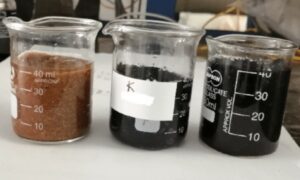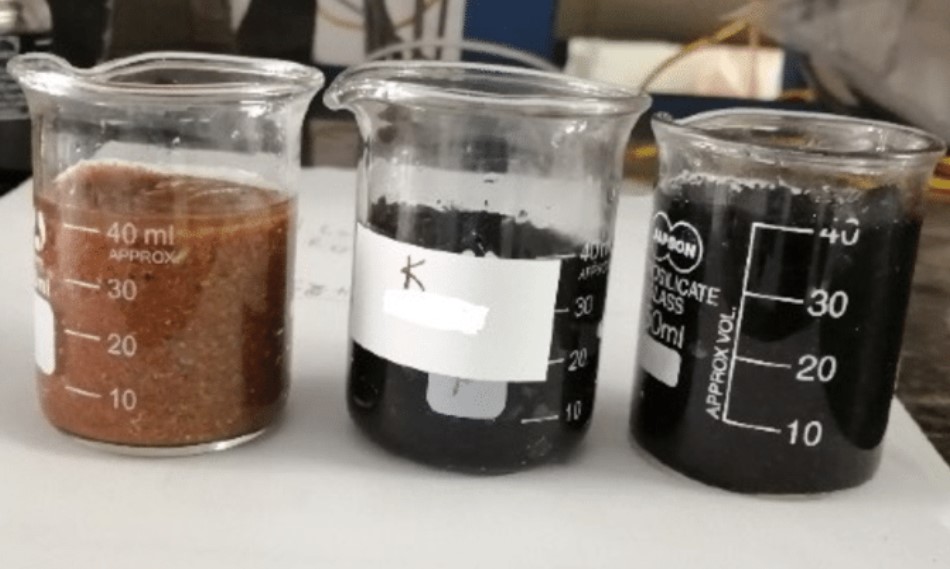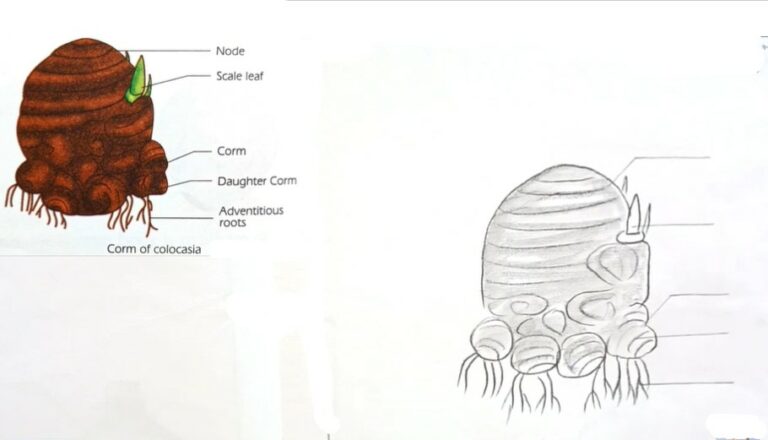Dry humus in a beaker Physical Properties and Characteristic
Dry humus refers to the organic matter that remains after the decomposition of plant and animal material in the soil. It is a dark, crumbly substance rich in nutrients and essential to fertile soil. When placed in a beaker, dry humus can provide valuable insights into soil characteristics and its potential for supporting plant growth.

Physical Properties and Characteristics of dry humus in a beaker
Upon close examination, dry humus in a beaker appears as a finely textured material with a dark brown to black colour. It has a loose, granular structure that easily crumbles when touched. The particles are often irregularly shaped and vary in size, ranging from fine dust-like particles to larger, coarser fragments.
One notable characteristic of dry humus is its high organic matter content. It primarily comprises decomposed plant residues, such as leaves, stems, and roots, along with the remains of microorganisms and small animals. This organic matter is rich in nutrients like nitrogen, phosphorus, and potassium, essential for plant growth.
Dry humus also exhibits excellent water retention properties. The material’s porous nature allows it to absorb and retain moisture, preventing excessive evaporation and providing a reservoir of water for plant roots. This water-holding capacity is crucial for maintaining soil moisture levels and ensuring water availability to plants during dry periods.
In addition to water retention, dry humus plays a vital role in soil structure and aeration. Its granular texture enhances soil porosity, allowing for the movement of air and water through the soil profile. This promotes root respiration, nutrient uptake, and the growth of beneficial soil microorganisms.
The presence of dry humus in a beaker indicates healthy soil fertility. Its dark colour results from the accumulation of organic matter, indicating the presence of a well-developed soil ecosystem. This humus layer acts as a reservoir for nutrients, slowly releasing them to plants over time, and contributes to the overall fertility and productivity of the soil.
Analyzing dry humus in a beaker can provide valuable information about soil quality and management practices. It can help determine the organic matter content, nutrient levels, and the presence of beneficial microorganisms. These insights enable farmers, gardeners, and researchers to make informed decisions about soil amendment strategies, crop selection, and overall soil health improvement.
Dry humus, when observed in a beaker, exhibits several distinct features:
Dark Color: Dry humus appears dark brown or black. This unclear colour results from the decomposition of organic matter, such as leaves, plant residues, and animal remains.
Crumbly Texture: Dry humus typically has a crumbly texture. It breaks apart easily into smaller particles, resembling fine crumbs or granules. This texture results from the breakdown of organic materials by soil microorganisms.
Lightweight: Dry humus is relatively light. It does not have a dense or compact structure like some soil types. This lightweight nature is due to the decomposition of organic matter, which reduces the overall density.
Earthy Odor: When dry humus is handled or disturbed, it often emits an earthy and pleasant odour. This smell is characteristic of the organic materials and microorganisms involved in decomposition.
Absorbent Properties: Dry humus has good water-holding capacity. It can absorb and retain moisture, improving soil fertility and moisture retention.
Nutrient-Rich: Humus is rich in organic matter and nutrients. It contains essential elements like nitrogen, phosphorus, potassium, and trace elements required for plant growth. These nutrients are released slowly over time, providing a steady supply to plants.
Also Read: Biology Specimen for WAEC 2023 and Answer
Dry humus, when observed in a beaker, exhibits several distinct features:
Dark Color: Dry humus appears dark brown or black. This unclear colour results from the decomposition of organic matter, such as leaves, plant residues, and animal remains.
Crumbly Texture: Dry humus typically has a crumbly texture. It breaks apart easily into smaller particles, resembling fine crumbs or granules. This texture results from the breakdown of organic materials by soil microorganisms.
Lightweight: Dry humus is relatively light. It does not have a dense or compact structure like some soil types. This lightweight nature is due to the decomposition of organic matter, which reduces the overall density.
Earthy Odor: When dry humus is handled or disturbed, it often emits an earthy and pleasant odour. This smell is characteristic of the organic materials and microorganisms involved in decomposition.
Absorbent Properties: Dry humus has good water-holding capacity. It can absorb and retain moisture, improving soil fertility and moisture retention.
Nutrient-Rich: Humus is rich in organic matter and nutrients. It contains essential elements like nitrogen, phosphorus, potassium, and trace elements required for plant growth. These nutrients are released slowly over time, providing a steady supply to plants.
In conclusion, dry humus in a beaker represents the organic matter that remains after decomposition in soil. Its dark, crumbly appearance and nutrient-rich composition make it essential to the fertile soil. By studying dry humus, we gain valuable insights into soil fertility, water retention, and overall soil health, which are crucial for sustainable agricultural practices and ecosystem preservation.



